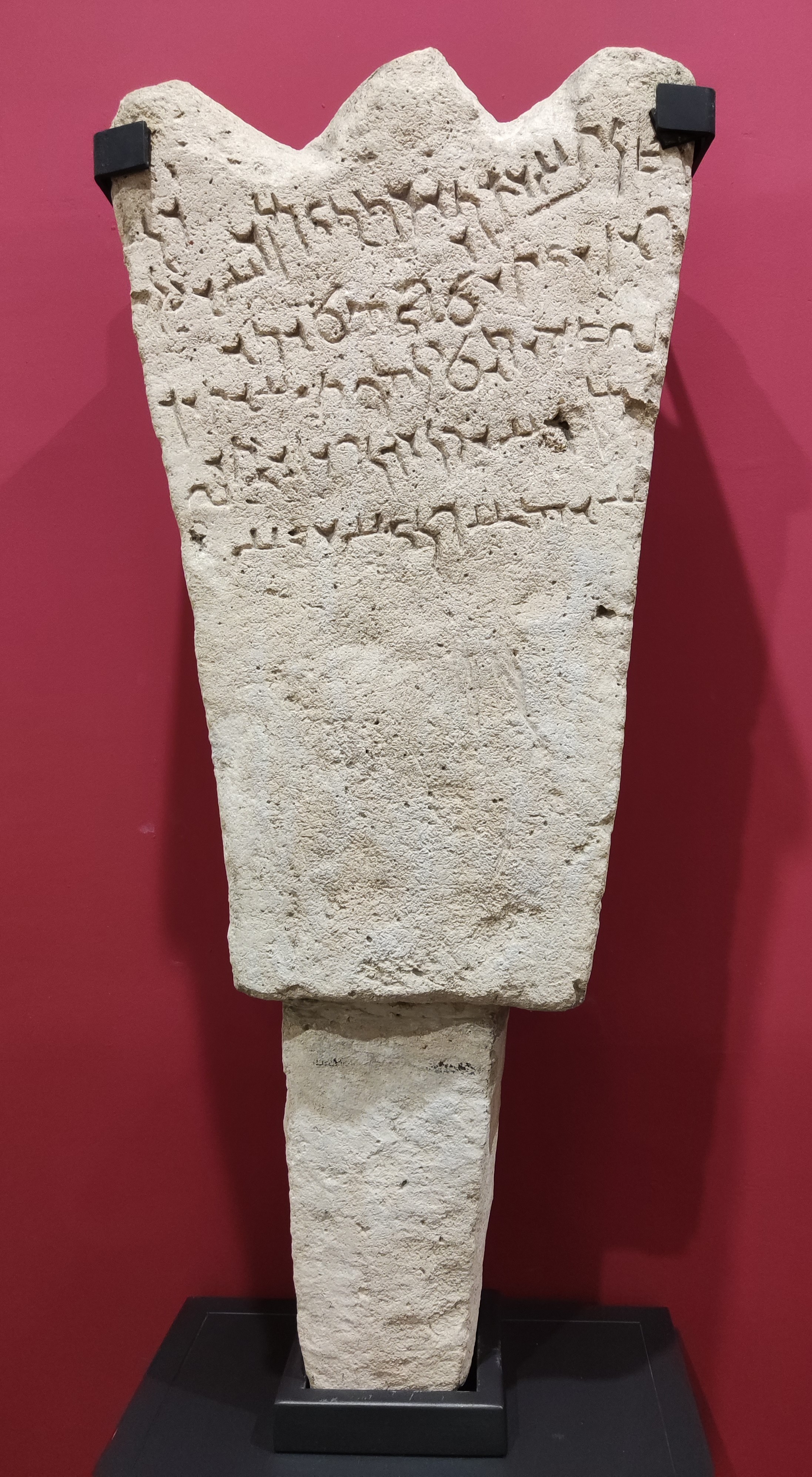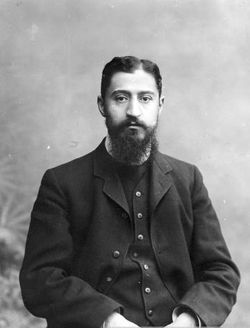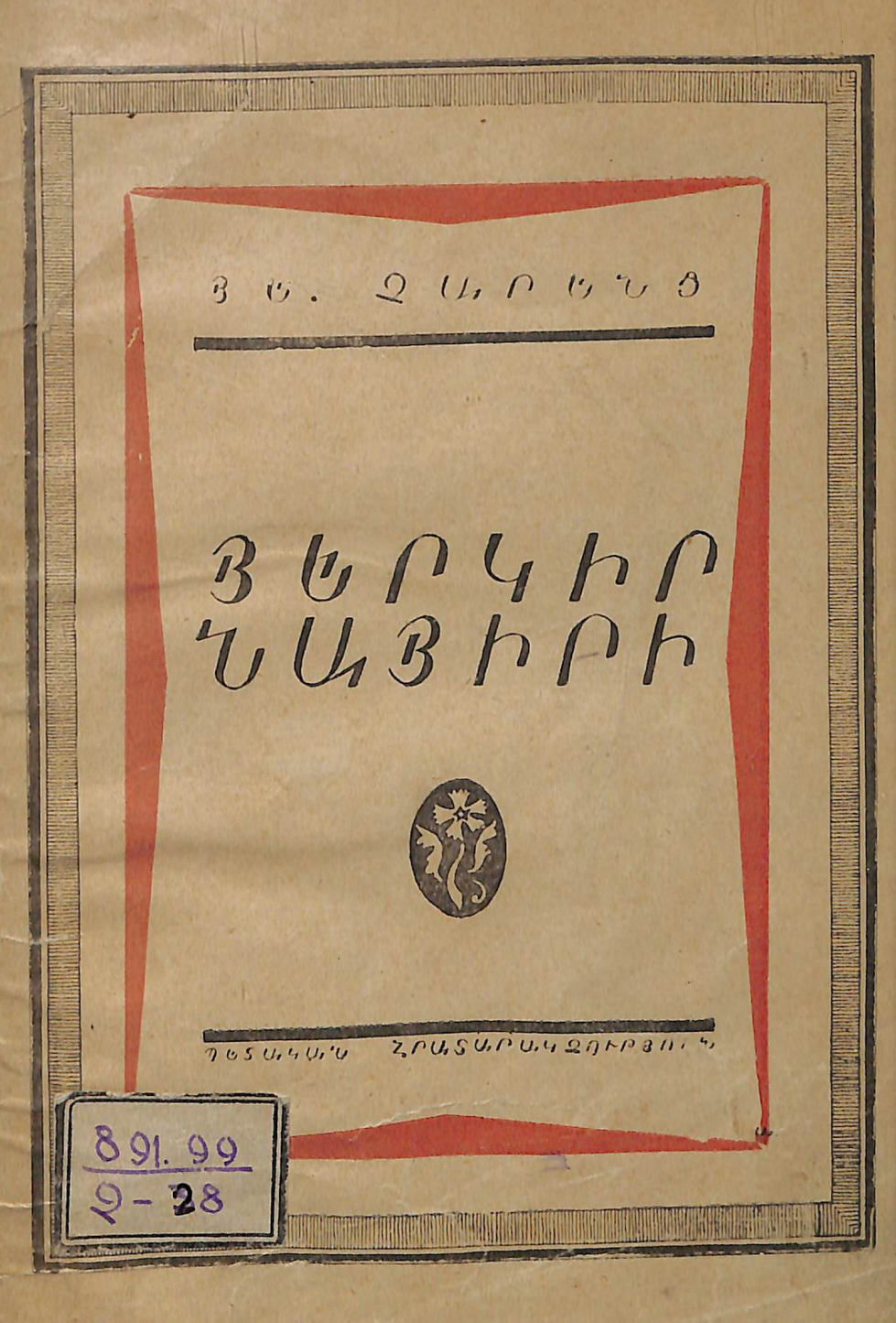|
Tmorik
Tmorik () was a region and system of defenses in the south of the Kingdom of Armenia. It was named after its main fortress, which was also known as Alki. It was built in ancient times (2nd millennium BCE) as a bulwark against threats coming from Mesopotamia. Once a district () of its own the province of Korchayk, it was later attached to the district of Kordrik, probably under the Arsacid dynasty. It is identified with the or mentioned in 13th–7th-century BCE Assyrian cuneiform inscriptions as one of the Nairi lands. It may be one of the lands mentioned by Strabo which were conquered by Artaxias I in the 2nd century BCE. Strabo refers to a land called , which has alternatively been read as * and identified with Tmorik. Robert Hewsen identifies Tmorik as the region surrounding the fortress of Tman on the slopes of Mt. Sararad/Ararad (modern-day Mount Judi in southeastern Turkey). However, this is disputed by Michał Marciak, who, following Heinrich Hübschmann, identified ... [...More Info...] [...Related Items...] OR: [Wikipedia] [Google] [Baidu] |
Artaxias I
Artaxias I (from ) was the founder of the Artaxiad dynasty of Kingdom of Armenia (antiquity), Armenia, ruling from 189 BC to 160 BC. Artaxias was a member of a branch of the Orontid dynasty, the earlier ruling dynasty of Armenia. He expanded his kingdom on all sides, consolidating the territory of Kingdom of Armenia (antiquity), Greater Armenia. He enacted a number of administrative reforms to order his expanded realm. He also founded a new capital in the central valley of the Aras (river), Araxes River called Artaxata (Artashat), which quickly grew into a major urban and commercial center. He was succeeded by his son Artavasdes I of Armenia, Artavasdes I. Modern scholars #Historical assessment, regard him as the founder of independent Armenian statehood. Name The Ancient Greek, Greek form ''Artaxias'' ultimately derives from the Iranian languages, Old Iranian name *, which is also the source of Greek () and Middle Persian Ardeshir (other), Ardashir. The Armenian_lang ... [...More Info...] [...Related Items...] OR: [Wikipedia] [Google] [Baidu] |
Kingdom Of Armenia (antiquity)
The Kingdom of Greater Armenia or simply Greater Armenia or Armenia Major ( '; ), sometimes referred to as the Armenian Empire under Tigranes the Great, Tigranes II, was an Armenians, Armenian kingdom in the Ancient Near East which existed from 331 BC to 428 AD. Its history is divided into the successive reigns of three Royal family, royal dynasties: Orontid dynasty, Orontid (331–200 BC), Artaxiad dynasty, Artaxiad (189 BC12 AD), and Arsacid dynasty of Armenia, Arsacid (52–428). The root of the kingdom lies in the Satrapy of Armenia of the Achaemenid Empire of Iran, which was formed from the territory of Urartu (860–590 BC) after it was conquered by the Medes in 590 BC. The satrapy became a kingdom in 321 BC during the reign of the Orontid dynasty after the conquest of Persia by Alexander the Great, which was then incorporated as one of the Hellenistic period, Hellenistic kingdoms of the Seleucid Empire. Under the Seleucid Empire ( ... [...More Info...] [...Related Items...] OR: [Wikipedia] [Google] [Baidu] |
Mount Judi
Mount Judi (; ; ; ) is a mountain in Turkey. It was considered in antiquity to be Noah's or "Place of Descent", the location where the Ark came to rest after the Great Flood, according to very early Christian and Islamic traditions (the latter based on the Quran, 11:44). The Quranic tradition is part of the Judeo-Christian-Islamic belief. The identification of biblical Ararat with Mount Judi as the landing site of the ark persisted in Syriac and Armenian tradition throughout Late Antiquity. Only during the Middle Ages was this identification abandoned in favour of another mountain, which had not until then been referred to by any of the native peoples as Mount Ararat (a double-peaked massif, today the highest mountain in Turkey and now generally known by that name). Location Mount Judi is situated in Turkey's Şırnak Province, near the villages of Derebaşı and Boyunyaka, at latitude: 37°22'28.21" and longitude: 42°28'16.03". It is a peak northeast of the town of Cizre ... [...More Info...] [...Related Items...] OR: [Wikipedia] [Google] [Baidu] |
Armenian National Academy Of Sciences
The National Academy of Sciences of the Republic of Armenia (NAS RA) (, ''Hayastani Hanrapetut’yan gitut’yunneri azgayin akademia'') is the Armenian national academy, functioning as the primary body that conducts research and coordinates activities in the fields of science and social sciences in Armenia. It is a member of the International Science Council. History The Academy of Sciences of the Armenian Soviet Socialist Republic was founded on 10 November 1943, on the basis of the Armenian Branch of the Soviet Academy of Sciences, which was established almost ten years earlier, in 1935. Among its founders were Joseph Orbeli, Stepan Malkhasyants, Ivan Gevorkian and Victor Ambartsumian. Orbeli became the first president of the academy. Presidents * Joseph Orbeli (1943–1947) * Viktor Ambartsumian (1947–1993) * Fadey Sargsyan (1993–2006) * Radik Martirosyan (2006–2021) * Ashot Saghyan (2021-present) Structure ;Division of Mathematical and Technical Sciences * Instit ... [...More Info...] [...Related Items...] OR: [Wikipedia] [Google] [Baidu] |
Yerevan State University
Yerevan State University (YSU; , , ), also simply University of Yerevan, is the oldest continuously operating public university in Armenia. Founded in 1919, it is the largest university in the country. It is thus informally known as Armenia's "mother university" (, ). Of its 3,150 employees, 1,190 comprise the teaching staff, which includes 25 academicians, 130 professors, 700 docents (associate professors), and 360 assistant lecturers. The university has 400 researchers, 1,350 post-graduate students, and 8,500 undergraduates, including 300 students from abroad. Instruction is in Armenian language, Armenian, but instruction in Russian language, Russian or English language, English for foreign students is available as needed. The academic year is from September 1 through June 30. According to University Ranking by Academic Performance (URAP), it was the top-ranked university in Armenia and the 954th in the world in 2010, of 20,000 institutions included in the list. Yerevan Sta ... [...More Info...] [...Related Items...] OR: [Wikipedia] [Google] [Baidu] |
Corduene
Gordyene or Corduene (; ; ) was an ancient historical region, located south of Lake Van, present-day eastern Turkey. According to the ''1911 Encyclopædia Britannica'', Gordyene is the ancient name of the region of ''Bohtan'', now Şırnak Province. It is mentioned as ''Beth Qardu'' in Syriac language, Syriac sources and is described as a small vassal state between Armenia and Parthian Empire in the mountainous area south of Lake Van in what is now Turkey. Corduene must also be sought on the left bank of the Tigris. Corduene is documented as a fertile mountainous district, rich in pasturage. The Kingdom of Gordyene emerged from the declining Seleucid Empire, and for most of its history it was a province of the Roman Empire and acknowledged the sovereignty of Ancient Rome, Rome. From 189 to 90 BCE, it enjoyed a period of independence. The people of Gordyene were known to have worshiped the List of Hurrian deities, Hurrian chief deity and weather god Teshub. Origins The origin ... [...More Info...] [...Related Items...] OR: [Wikipedia] [Google] [Baidu] |
Arsacid Dynasty Of Armenia
The Arsacid dynasty, called the Arshakuni () in Armenian, ruled the Kingdom of Armenia (with some interruptions) from 12 to 428 AD. The dynasty was a branch of the Arsacid dynasty of Parthia. Arsacid kings reigned intermittently throughout the chaotic years following the fall of the Artaxiad dynasty until 62, when Tiridates I, brother of Parthian King Vologases I, secured Arsacid rule in Armenia as a client king of Rome. However, he did not succeed in establishing his line on the throne, and various princes of different Arsacid lineages ruled until the accession of Vologases II, who succeeded in establishing his own line on the Armenian throne, which ruled the kingdom until its abolishment by the Sasanian Empire in 428. Two of the most notable events under Arsacid rule in Armenian history were the conversion of Armenia to Christianity by Gregory the Illuminator and Tiridates III in the early 4th century and the creation of the Armenian alphabet by Mesrop Mashtots in . In ... [...More Info...] [...Related Items...] OR: [Wikipedia] [Google] [Baidu] |
Nairi
Nairi (, also ''Na-'i-ru''; ) was the Akkadian name for a region inhabited by a particular group (possibly a confederation or league) of tribal principalities in the Armenian Highlands, approximately spanning the area between modern Diyarbakır and Lake Van and the region west of Lake Urmia. Nairi has sometimes been equated with Nihriya, known from Mesopotamian, Hittite, and Urartian sources. However, its co-occurrence with Nihriya within a single text may argue against this. Prior to the Bronze Age collapse, the Nairi tribes were considered a force strong enough to contend with both Assyria and Hatti. If Nairi and Nihriya are to be identified, then the region was the site of the Battle of Nihriya (), the culminating point of the hostilities between Hittites and Assyrians for control over the remnants of the former kingdom of Mitanni. The first kings of Urartu referred to their kingdom as ''Nairi'' instead of the native self-appellation ''Bianili''. However, the exact relati ... [...More Info...] [...Related Items...] OR: [Wikipedia] [Google] [Baidu] |
Strabo
Strabo''Strabo'' (meaning "squinty", as in strabismus) was a term employed by the Romans for anyone whose eyes were distorted or deformed. The father of Pompey was called "Gnaeus Pompeius Strabo, Pompeius Strabo". A native of Sicily so clear-sighted that he could see things at great distance as if they were nearby was also called "Strabo". (; ''Strábōn''; 64 or 63 BC) was an ancient Greece, ancient Greek geographer who lived in Anatolia, Asia Minor during the transitional period of the Roman Republic into the Roman Empire. He is best known for his work ''Geographica'', which presented a descriptive history of people and places from different regions of the world known during his lifetime. Additionally, Strabo authored historical works, but only fragments and quotations of these survive in the writings of other authors. Early life Strabo was born to an affluent family from Amasya, Amaseia in Kingdom of Pontus, Pontus in around 64BC. His family had been involved in politics s ... [...More Info...] [...Related Items...] OR: [Wikipedia] [Google] [Baidu] |
Robert H
The name Robert is an ancient Germanic given name, from Proto-Germanic "fame" and "bright" (''Hrōþiberhtaz''). Compare Old Dutch ''Robrecht'' and Old High German ''Hrodebert'' (a compound of ''Hrōþ, Hruod'' () "fame, glory, honour, praise, renown, godlike" and ''berht'' "bright, light, shining"). It is the second most frequently used given name of ancient Germanic origin.Reaney & Wilson, 1997. ''Dictionary of English Surnames''. Oxford University Press. It is also in use Robert (surname), as a surname. Another commonly used form of the name is Rupert (name), Rupert. After becoming widely used in Continental Europe, the name entered England in its Old French form ''Robert'', where an Old English cognate form (''Hrēodbēorht'', ''Hrodberht'', ''Hrēodbēorð'', ''Hrœdbœrð'', ''Hrœdberð'', ''Hrōðberχtŕ'') had existed before the Norman Conquest. The feminine version is Roberta (given name), Roberta. The Italian, Portuguese, and Spanish form is Roberto (given name), ... [...More Info...] [...Related Items...] OR: [Wikipedia] [Google] [Baidu] |
Michał Marciak
Michał Marciak (born 16 March 1981 in Kraków) is Associate Professor of History at Jagiellonian University since 2018, specializing in the historical geography of the ancient Near East. He has a MA in history (2007), a MA in theology (2007), and received his PhD in 2012 from the Faculty of Humanities of the University of Leiden Leiden University (abbreviated as ''LEI''; ) is a public research university in Leiden, Netherlands. Established in 1575 by William, Prince of Orange as a Protestant institution, it holds the distinction of being the oldest university in the Neth .... Selected publications A selection of Marciak's works: * * Pirowski, Tomasz, Michał Marciak, and Marcin Sobiech. 2021. "Potentialities and Limitations of Research on VHRS Data: Alexander the Great’s Military Camp at Gaugamela on the Navkur Plain in Kurdish Iraq as a Test Case" Remote Sensing 13, no. 5: 904. https://doi.org/10.3390/rs13050904 * MARCIAK, Michał. The Upper Tigris Region between Rome, Iran, ... [...More Info...] [...Related Items...] OR: [Wikipedia] [Google] [Baidu] |
Heinrich Hübschmann
Johann Heinrich Hübschmann (1 July 1848 – 20 January 1908) was a German philologist. Life Hübschmann was born on 1 July 1848 at Erfurt. He studied Oriental philology at Jena, Tübingen, Leipzig, and Munich; in 1876 he became professor of Iranian languages at Leipzig, and in 1877 professor of comparative philology at Strasbourg. Hübschmann died on 20 January 1908 in Freiburg im Breisgau. Research on the Armenian language Hübschmann was the first to show in 1875 that the Armenian language was not a branch of the Iranian languages (earlier assumed so because of the immense amount of Iranian influence on Armenian throughout its history) but an entirely separate Indo-European branch in its own right. He used the comparative method In linguistics, the comparative method is a technique for studying the development of languages by performing a feature-by-feature comparison of two or more languages with common descent from a shared ancestor and then extrapolating backwards .. ... [...More Info...] [...Related Items...] OR: [Wikipedia] [Google] [Baidu] |





